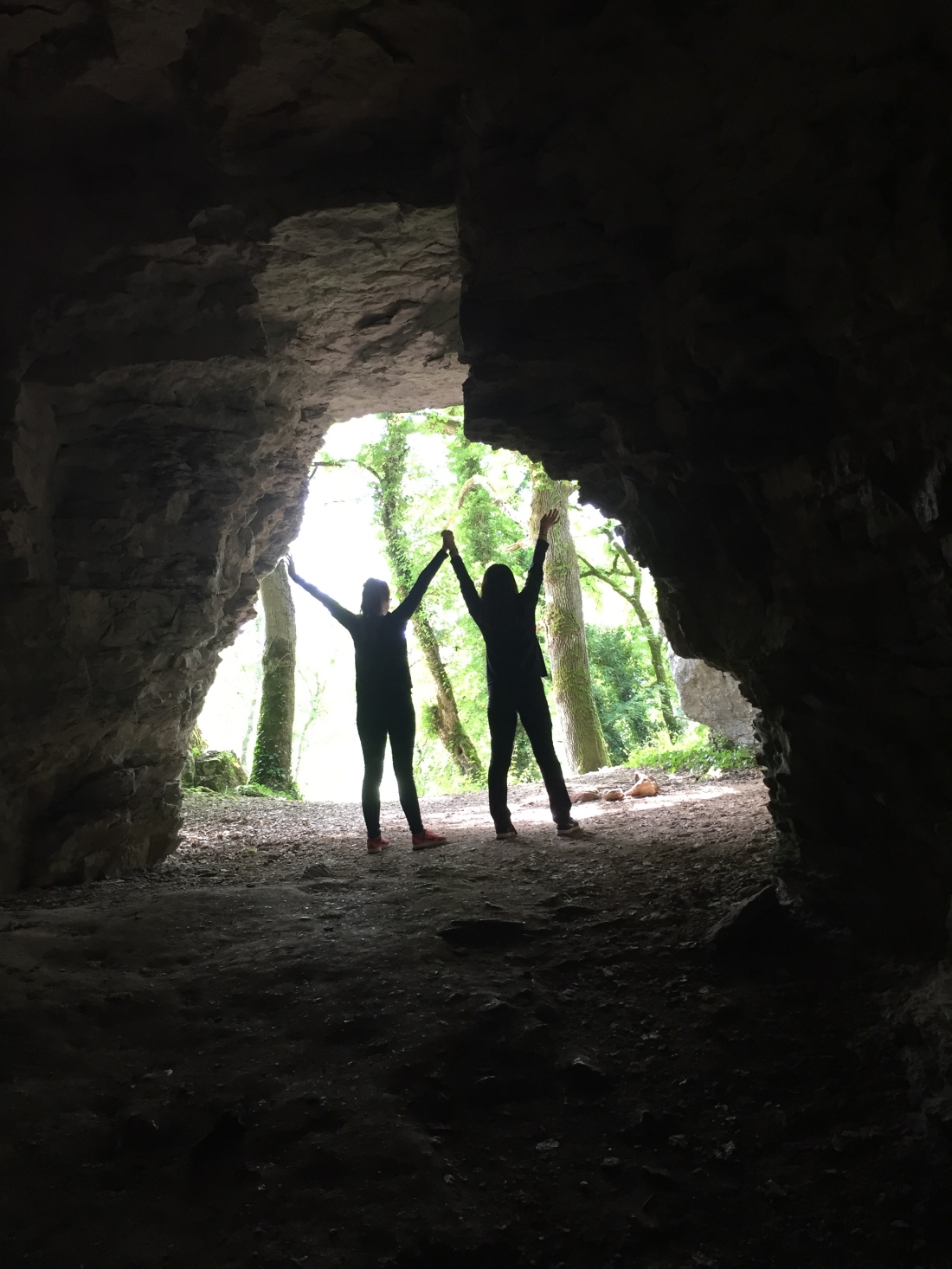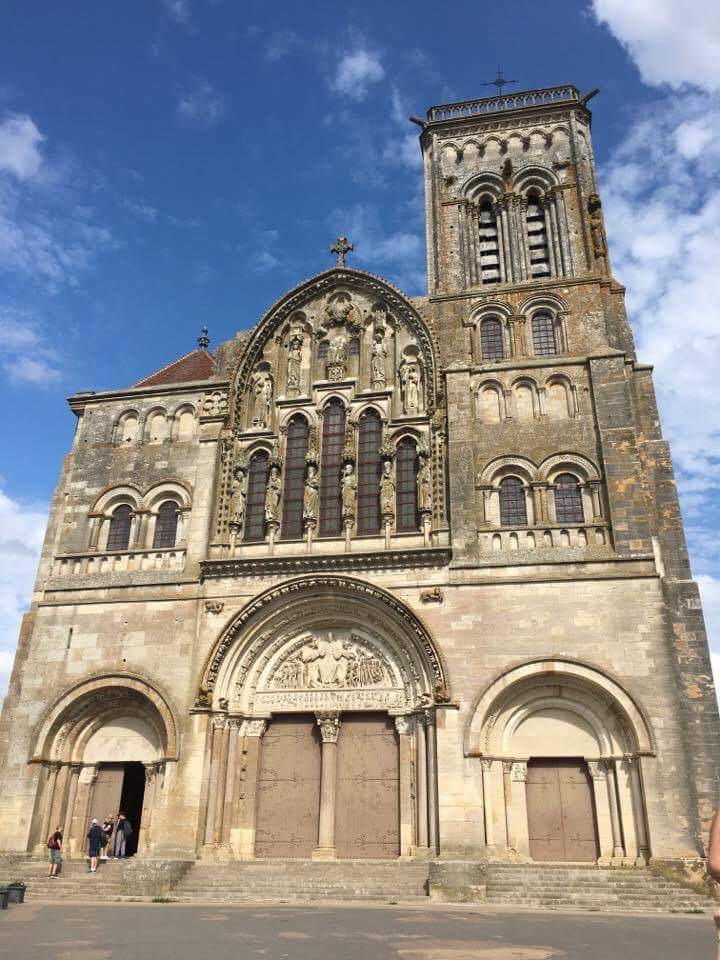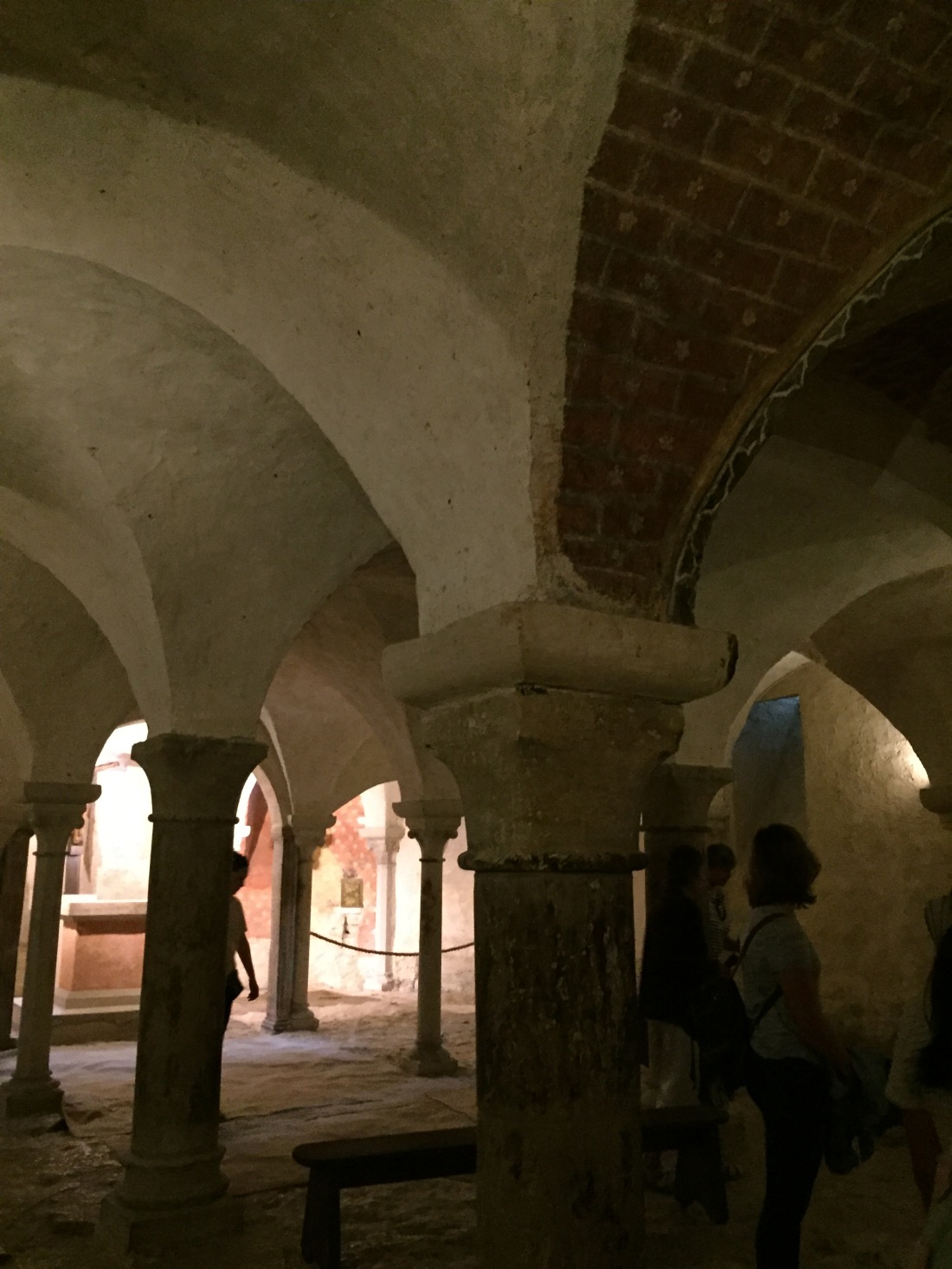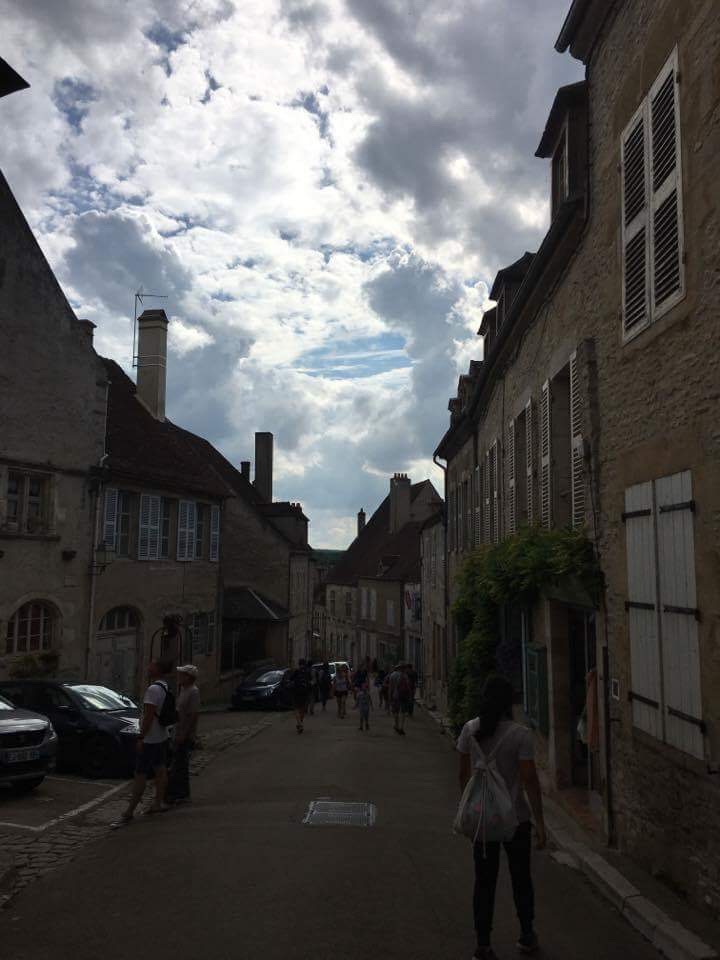I’m usually the laziest photographer on this year’s Bibracte crew. It’s been said over and over again, but I think that the vibrant fullness of any scenery is only partially conveyed through a viewfinder. Today, at the Grottes d’Arcy-Sur-Cure, I learned from our guide that we couldn’t take photographs of the cave. I was seriously, uncharacteristically disappointed. It was a place that made you want to take pictures, just for the feeling of giving that perfect image some kind of permanence. I’ve got no pictures of Arcy-Sur-Cure’s breathtaking caves to post today, and I feel like they’d only tarnish the mental picture that my eyes have already drawn out for me.
When we entered the caves, our guide pointed out that the walls of the caves seemed to glow yellow under the illumination of a flashlight. He told us that yellow, not red, was the color of ochre before it was heated, and that this color was characteristic of the ochre-rich mountains of Arcy-Sur-Cure. In some places, the caves were bone-white, damaged by the hydrochloric acid used to clean the caves before it was opened to the public. Narrow passageways expanded into sprawling caverns, and our bodies slowly adjusted to the constant 15°C temperature. In large caverns, stalactites reached down from the ceiling like great fingers and stalagmites stretched up to meet them. Sometimes, they connected in a column, joined by a thin and tenuous bridge of rock. These natural rock formations develop at a rate of one centimeter per century—despite the fragile appearance of these columns, they’ve survived for long enough to grow many feet long. The unification of the rock structures is the product of perfect chance and years of development. It’s no wonder our guide referred to the columns as a marriage.
Another cavern was called Calvary, because of a crucifix-like rock formation in the center of the room. The cavern’s walls are marked with a rippling pattern, created by eddies of the water which once flowed past them. Higher up the wall were delicate rock formations, which layered over each other like the folds in a woman’s dress. The ceiling looked completely smooth and flat, indicating that the ceiling was completely waterproof—a more rare phenomenon than the stalactites in the previous cavern. Here, in this vast, empty, and strangely sacred place, Bibracte’s 2017 crew delivered a powerful and haunting rendition of Taylor Swift’s “Blank Space” (just now, my roommate Ginny called this “blank-space-ception”). It was a sweet moment, rivaling golden retriever puppies and cinnamon buns in wholesomeness.
The highlight of the Arcy-Sur-Cure caves is undoubtedly the 28,000 year-old cave paintings on its walls. The drawings of mammoths, birds, bears, and handprints, drawn in red ochre and black charcoal, were simple and weathered. It sounds underwhelming, but the real beauty of those paintings was how long they’d survived. They had to have been drawn by hand or with an animal-hair brush, with only the light of a torch as a guide. Their preservation and longevity made those paintings stunning and humbling, even in their simplicity. I don’t really know how to describe it.

Once we returned to the surface, we had a picnic lunch and returned to the Magistra Mobile (the only van for me) and the Langford Model-T to drive to our next destination: Vézelay. In Vézelay, we climbed a hill to visit a cathedral dedicated to Mary Magdalene. It’s another place that’s hard to describe, both imposing and beautiful. Marion, one of our kind-hearted and ridiculously well-informed guides (the only person on our Bibracte dig site who jammed to “Dancing Queen” with me in the pit) told us that although the cathedral was meant to inspire and astound its visitors with its architectural complexity and size, it was also meant to be a sanctuary, a place of safety. I think that these elements, as well as its physical structure, have been preserved pretty well up to date.



We get a little bit of free time in Vézelay before driving back home to Bibracte for dinner. In the car, Zac and Suan fall asleep on each other, Nosa drops a solo cover of “Starboy,” Jack jams to “Shining Star,” Marion teaches uncultured Latinists the correct pronunciation of Stromae (it’s “stro-may” with a little phlegm on the “stro” and no diphthong, as much as it kills me to say), the Spotify gods completely ignore me, and Magistra Campbell plays my music out of pity.
It’s now late in the night and my roommates have long since slipped into their dreams. Tomorrow night will be our last night as roommates, our last night in Bibracte. Words (especially my words) aren’t enough to express what this experience has meant to each one of us so far. The vision of our trip that I’ve described is even more vague than a photograph or picture—you’ll have to piece together our experience with only the help of a thousand words. It’s been so much more than that.
Alexis ‘18